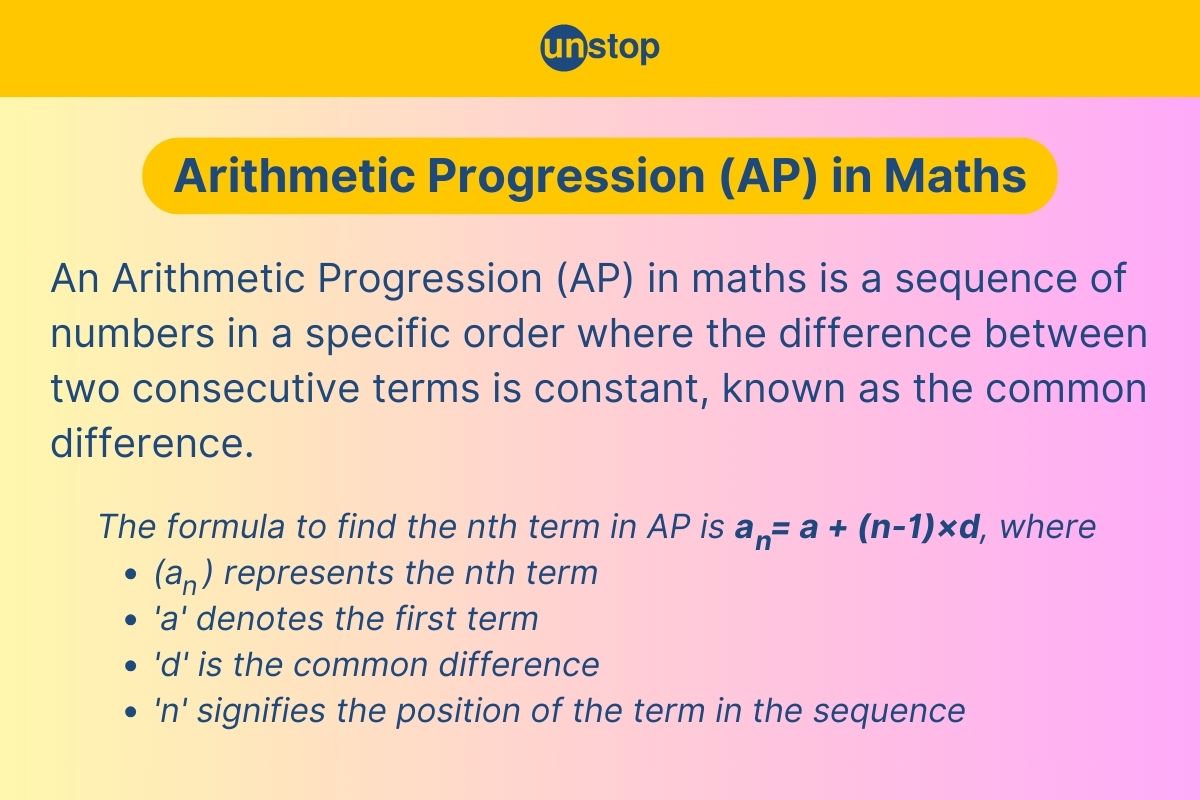- Step 1: The Groundwork
- Step 2: The Three Sections
- Step 3: Practice Makes Improvement
- The Secret Ingredient
- Understanding Basics Of Number Series
- Types Of Number Series Reasoning Questions
- Addition & Multiplication In Number Series
- Square & Cube-Based Number Series Patterns
- Missing Terms & Arranging Sequences
- Tricks & Tips For Solving Number Series
- Selected Number Series Questions With Solutions
- Frequently Asked Questions (FAQs)
- Must Know Terminologies in Blood Relation Questions
- Basic Approaches to Solve Blood Relation Questions
- Types Of Blood Relation Questions
- Tips For Solving Blood Relation Questions
- Multiple Choice Questions (MCQs) with Detailed Explanation
- Conclusion
- Frequently Asked Questions (FAQs)
- Letter Series In Logical Reasoning
- Types Of Letter Series Patterns
- Tips For Solving Letter Series Reasoning
- Best Practice Question Samples With Answers
- Conclusion
- Frequently Asked Questions (FAQs)
- Basics of Problems On Age-Related Questions
- Formula to Solve Problems on Ages-Related Questions
- Types of Age-Related Questions & Examples
- Tips & Tricks for Solving Ages Problems
- Best MCQs on Problems on ages with solved answers
- Conclusion
- Frequently Asked Questions (FAQs)
- Definition of Calendar
- Understanding Days of the Week
- What is a Leap Year?
- Concept of Odd Days in a Century
- Tips For Solving Calendar Reasoning Questions
- Best Calendar Reasoning Questions with Answers (MCQs)
- Frequently Asked Questions (FAQs)
- Basic Concepts of Clock
- Structure of a Clock
- Angle Equilavalence in Clock
- Tips For Solving Clock Questions
- Selected Clock Questions & Answers (MCQs)
- Conclusion
- Frequently Asked Questions (FAQs)
- Understanding The Concept Of Direction Sense
- Tips For Effective Problem-Solving In Direction Sense
- Practical Test Practice Questions And Answers
- Conclusion
- Frequently Asked Questions (FAQs)
- Importance Of Dice Reasoning
- Dice Numbers In Dice Reasoning
- Classification Of Dice
- Constructed Vs Deconstructed Dice
- Tricks & Tips For Solving Dice Problems
- Practice MCQs With Detailed Answers
- Conclusion
- Frequently Asked Questions (FAQs)
- Alphanumeric Series Defined
- Alphanumeric Series In Reasoning Tests
- Tips & Strategies For Solving Alphanumeric Series
- Practice Sample Questions With Detailed Answers
- Conclusion
- Frequently Asked Questions (FAQs)
- Concept Of Mirror Image Reasoning Explained
- Important Terms In Mirror Image Reasoning
- Types Of Mirror Images
- Identifying Correct Mirror Image
- Finding Clock's Mirror Image
- Tips To Solve Mirror Images
- Selected Practice Questions With Answers
- Conclusion
- Frequently Asked Questions (FAQs)
- Concept & Overview Of Input-Output
- Input-Output In Competitive Exams
- Types Of Input-Output Problems
- Strategies, Tips & Tricks For Solving Reasoning Questions
- Selected Practice Questions With Answers
- Conclusion
- Frequently Asked Questions (FAQs)
- Importance Of Finding The Odd One Out
- Tricks And Tips
- How to Find The Odd One Out?
- Solved MCQs with Detailed Explanation
- Conclusion
- Frequently Asked Questions (FAQs)
- Understanding Key Concepts
- Exploring Different Ranking Types
- Formula And Application Of Order And Ranking
- Tips For Solving Order & Ranking
- Selected Practice Questions And Answers
- Conclusion
- Frequently Asked Questions (FAQs)
- Importance Of Pipes & Cistern Aptitude
- Key Terminologies used in Pipes and Cisterns
- Pipes and Cisterns Formula with Examples
- Pipes and Cisterns Shortcut Tricks
- Tips For Solving Pipes & Cistern Problems
- Selected Questions & Answers For Practice (MCQs)
- Conclusion
- Frequently Asked Questions (FAQs)
- Key Concept in Boats and Streams
- Formulas Of Boats & Streams
- Distance & Time Formula
- Tips For Solving Boats & Streams Questions
- Selected Practice Questions With Answers (MCQs)
- Conclusion
- Frequently Asked Questions (FAQs)
- Concept of Mixture and Alligation
- Types Of Alligation Questions
- Formula for Solving Mixture & Alligation
- Tips For Solving Mixture And Alligation
- Selected Questions With Answers For Practice
- Conclusion
- Frequently Asked Questions (FAQs)
- Concepts and Definitions Related to Time and Work
- Important Time And Work Formulas
- Tricks and Tips to Solve Time & Work Questions
- Time And Work MCQs with Detailed Solution
- Conclusion
- Frequently Asked Questions (FAQs)
- What is Harmonic Progression(HP)?
- Formula to find the nth Term in Harmonic Progression
- Formula to find the Sum of the nth Term in HP
- What is Harmonic Mean?
- Harmonic Progression Solved Best MCQs
- Conclusion
- Frequently Asked Questions (FAQs)
- What is Mensuration in Maths?
- What are 2D figures in Mensuration?
- What are 3D figures in Mensuartion?
- Basic Terminologies In Mensuration
- Basic 2D Formulas in Mensuration
- Basic 3D Formulas in Mensuration
- 2D vs 3D in Mensuration
- Solved Questions With Solutions (MCQs)
- Conclusion
- Frequently Asked Questions (FAQs)
- Relationship Between Time, Speed And Distance
- Conversion Units Time, Speed And Distance
- Average & Relative Speed: Two Trains Moving in the same or opposite direction
- Solved MCQs on Time, Speed And Distance
- Conclusion
- Frequently Asked Questions (FAQs)
- What is Simplification in Maths?
- BODMAS Rule in Simplification Explained
- Simplification & Approximation Relation
- Key Terms in Simplification
- Examples Of Simplification Techniques
- Simplification Questions With Solved Answers (MCQs)
- Conclusion
- Frequently Asked Questions (FAQs)
- Height And Distance Important Terms
- Right Angled Triangle In Trigonometry
- Trigonometric Ratios
- Solved Examples For Better Understanding
- Height And Distance Applications In Trigonometry
- Height And Distance Practice Questions & Answers
- Conclusion
- Frequently Asked Questions (FAQs)
- Defining Interest Types
- Simple Interest Vs. Compound Interest
- Selected Solved Questions & Answers
- Conclusion
- Frequently Asked Questions (FAQs)
- Basic Concepts Of Profit And Loss
- Determining Selling Price
- Calculating Discounts
- Formulas For Calculating Profit And Loss
- Examples Of Profit And Loss
- Profit & Loss Questions With Detailed Solution
- Conclusion
- Frequently Asked Questions (FAQs)
- Defining Angle Of Elevation
- Key Terms Used In Angle Of Elevation
- Angle of Elevation Formula with Example
- Angle of Elevation vs. Angle of Depression
- Angle of Elevation MCQs with Answers
- Conclusion
- Frequently Asked Questions (FAQs)
- Defining HCF And LCM
- Calculation Methods Of HCF And LCM
- HCF By Prime Factorization Method
- LCM By Prime Factorization Method
- Difference Between HCF And LCM
- HCF & LCM Practice Questions With Answers
- Conclusion
- Frequently Asked Questions (FAQs)
- What is fraction and decimal?
- Understanding Decimal Fraction
- Place Value in Decimal Fraction
- Mathematical Operations with Decimal Fraction
- Practice with Solved Examples
- Summary
- Frequently Asked Questions
- All About Decimals
- All About Fractions
- How to Convert a Decimal into Fraction
- Simple vs Recurring Decimals
- Converting Recurring Decimals to Fractions
- Conversion Charts
- Practice Questions (With Solutions)
- Closing Thoughts
- Frequently Asked Questions
- What is Arithmetic Mean?
- Arithmetic Mean Formula- Ungroup Data & Group Data
- Merits of Arithmetic Mean
- Demerits of Arithmetic Mean
- Alternatives to Arithmetic Mean
- What is the Weighted Arithmetic Mean?
- Arithmetic vs. Geometric Mean
- Arithmetic Mean Application in Statistical Analysis
- Arithmetic Mean Practice Questions with Explanation
- Frequently Asked Questions
- What is Geometric Progression?
- Key Properties of Geometric Progression
- General Form Of Geometric Progression
- General Term or the Nth Term of Geometric Progression
- The sum of nth Terms of GP
- Types Of Geometric Progression
- Solved Questions and Answers of GP
- Conclusion
- Frequently Asked Questions (FAQs)
- Average in Maths
- Average Formula in Maths
- Differentiating Types of Average
- How to Calculate Average of Negative Numbers?
- Practical Applications of Averages
- Average Questions For Practice
- Frequently Asked Questions
- What is Simple Interest in Maths?
- Simple Interest Formula Explained
- Simple Interest Formula for Years, Months & Days
- Simple Interest Examples & Practice Questions
- Conclusion
- Frequently Asked Questions (FAQs)
- Defining Mathematical Ratios
- Understanding Proportions Fundamentals
- Differentiating Ratios from Proportions
- Ratio and Proportion Formulas
- Properties of Ratio and Proportion
- How to Solve Ratio and Proportion Problems
- Ratio and Proportion Problems (With Solutions)
- Summary
- Frequently Asked Questions
- What is Number in Maths?
- Types of Numbers With Example
- Real vs Complex Numbers Explored
- Basic Operations on Numbers
- Practice Questions (With Solutions)
- Frequently Asked Questions
- What is Arithmetic Progression (AP) in Maths?
- Important Terminologies in Arithmetic Progression
- Basic Terms in Arithmetic Progression
- General Form Of Arithmetic Progression Series
- Types Of Arithmetic Progression
- Solved Questions With Explanation (MCQs)
- Conclusion
- Frequently Asked Questions (FAQs)
- Understanding Basic Concept
- Importance Of Train Problems In Aptitude
- Tips To Solve Train Problems
- Selected Practice Questions & Answers
- Conclusion
- Frequently Asked Questions (FAQs)
- Definition Of Mode
- Calculating Mode For Ungrouped Data
- Calculating Mode For Grouped Data
- Bimodal, Trimodal & Multimodal Distributions
- Comparing Mean, Median & Mode
- Selected Practice Questions With Answers
- Conclusion
- Frequently Asked Questions (FAQs)
- Important Concept In Races And Games
- Calculating Time, Speed & Distance
- Importance Of Races And Games Problems
- Sample Practice Questions With Answers
- Conclusion
- Frequently Asked Questions (FAQs)
- Types Of Partnership
- Formula For Partnership Questions
- Tips To Solve Partnership Aptitude Questions
- Selected Partnership Questions (Practice MCQs)
- Conclusion
- Frequently Asked Questions (FAQs)
Arithmetic Progression: Definition, AP Formula, Nth term and Sum

Understanding arithmetic progression is crucial in mathematics as it helps solve various problems more effectively. Whether you are a student looking to enhance your math skills or an enthusiast curious about the beauty of numbers, this guide will provide you with valuable insights into the world of arithmetic progression. Get the formula and explanation in detail.
What is Arithmetic Progression (AP) in Maths?
An Arithmetic Progression (AP) in maths is a sequence of numbers (2, 5, 8, 1,....) in a specific order where the difference between two consecutive terms is constant (d=3). This constant difference is known as the common difference.
Each term in an arithmetic progression can be calculated by adding the common difference to the preceding term. The general form of an arithmetic progression can be represented as an= a1 + (n - 1)d, where an is the nth term.

Important Terminologies in Arithmetic Progression
| Terminology | Explanation |
|---|---|
| Arithmetic Progression | A sequence of numbers in which the difference between consecutive terms remains constant. |
| General form | a, a+d, a+2d, a+3d,… where aaa is the first term and ddd is the common difference. |
| First term (a) | The initial term of the sequence that starts the progression. |
| Common difference (d) | The fixed value added (if positive) or subtracted (if negative) to each term to get the next. |
| n-th term formula | The formula for the n-th term: Tn=a+(n−1)×d, where n is the term number. |
| Sum of first n terms | The sum of the first 'n' terms is given by Sn=n/2×[2a+(n−1)×d]. |
| Types of progression | - Increasing: When d>0 (terms grow larger) - Decreasing: When d<0 (terms get smaller) |
Basic Terms in Arithmetic Progression
Let us study some of the basic terms in arithmetic progression:
Consecutive Terms: In an arithmetic progression, consecutive terms are the terms that follow each other in sequence. The first term plays a crucial role as it sets the starting point for the progression.
Last Term: The last term marks the endpoint of the arithmetic progression. It is determined by the number of terms and the common difference.
Successive Terms: Successive terms in an arithmetic progression are calculated by adding or subtracting the common difference from the preceding term. This process continues until the desired term is reached.
Previous Term: The previous term in an arithmetic progression is always one step behind the current term. It is obtained by either subtracting or adding the common difference to reach back a step.
Differences: The differences between consecutive terms in an arithmetic progression are constant, representing the common difference. This consistent variance forms the foundation of arithmetic progressions.
General Term: The general term of an arithmetic progression describes any term within the sequence using variables such as 'n' for position and 'a' for the first term. It helps generalize patterns in progressions.
What is the First Term in AP?
In arithmetic progression, the first term is denoted by 'a'. It represents the initial value of the sequence. For instance, if we have a sequence starting with 2, then a = 2. The first term serves as the foundation for the entire sequence and determines all subsequent values. It's crucial in defining the progression and understanding its structure.
What is the Common Difference in AP?
The common difference between consecutive numbers in an arithmetic progression is represented by 'd'. This value signifies how much each term increases or decreases from the preceding. For example, consider a sequence where each number is 3 more than the previous one. In this case, d = 3. The common difference defines the pattern and relationship between terms.
n-th Term in Arithmetic Progression
In an arithmetic progression, the term at position 'n' is denoted as 'an'. This symbol represents a particular term in the sequence.
If we want to find the 5th term in a sequence with a common difference of 4, we use the formula: a5 = a + (n-1)d, where n = 5.
General Form Of Arithmetic Progression Series
Generally, an arithmetic progression (AP) can be written as (a, a + d, a + 2d, a + 3d, and so on), where 'a' is the starting number and 'd' is the fixed amount added to each term. To represent an arithmetic progression series, you start with the first term denoted by 'a' and add the common difference' d' successively to obtain each subsequent term.
Formula for n-th Term in Arithmetic Progression
The formula to find the n-th term in AP is an = a + (n-1)×d, where
-
(an) represents the nth term,
-
'a' denotes the first term,
-
'd' is the common difference,
-
'n' signifies the position of the term in the sequence.
When finding a specific term in an AP series, you can use this formula by plugging in the values of 'a', 'd', and 'n'.
Summation of the n-th term in AP (Formula)
The sum of the initial 'n' terms in an arithmetic progression is determined by a formula called the sum of an arithmetic series. It is represented as: Sn= n/2 [2a+(n-1)×d]
-
(Sn): sum of the first n terms
-
(n): number of terms being summed
-
(a): the first term of the AP
-
(d): the common difference between consecutive terms
Types Of Arithmetic Progression
Let us study the types of arithmetic progression:
Finite AP
Finite arithmetic progressions have a specific number of terms and a well-defined endpoint. The final term in the sequence limits them, making them finite. The common difference between consecutive terms remains constant throughout the progression.
Infinite AP
Infinite arithmetic progressions continue indefinitely without an endpoint. They have an infinite number of terms that follow a specific pattern dictated by the common difference.
Click here to enhance and upskill your quantitative aptitude by exploring different topics, including arithmetic progression.
Solved Questions With Explanation (MCQs)
Practice is the key to excelling in quantity aptitudes, such as arithmetic progression! Below are some of the top selected practice questions with answers:

Question 1: A sequence is given as 5,9,13,17,…
What is the 15th term of this arithmetic progression?
A) 57
B) 61
C) 65
D) 69
Correct option: B) 61
Explanation: First term, a1=5
Common difference, d=9−5=4
Number of terms, n=15
Substituting this into the formula an=a1+(n−1)×d, we have, a15=5+(15−1)×4=5+14×4= 5 + 56 = 61.
Question 2: What is the fifth term of the arithmetic progression with a first term of 3 and a common difference of 4?
A) 15
B) 16
C) 19
D) 18
Correct answer: C) 19
Explanation: Same process as in question 1. Apply the formula an=a1+(n−1)×d by substituting these values a1=3, d=4 & n=5.
Question 3: What is the sum of the first 10 terms of the arithmetic progression 1, 3, 5, 7, ...?
A) 100
B) 110
C) 90
D) 120
Correct answer: A) 100
Explanation: For the given AP:
- The first term a=1
- The common difference d=3−1=2
- The number of terms n=10
Plugging these values into the formula: Sn=n/2×[2a+(n−1)×d]
S10=10/2×(2×1+(10−1)×2=5×(2+9×2)=5×(2+18)=5×20=100
So, the sum of the first 10 terms of the arithmetic progression is 100.
Question 4: Find the 15th term and the sum of the first 15 terms of the arithmetic progression with the first term a=4 and common difference d=3.
A) 25, 354
B) 35, 324
C) 59, 379
D) 46, 375
Correct answer: D) 46, 375
Explanation: The formula for the n-th term of an AP is: an=a+(n−1)×d
For the 15th term (n=15),
a15=4+(15−1)×3=4+14×3=4+42=46
So, the 15th term is 46.
The formula for the sum of the first n terms of an AP is: Sn=n/2×[2a+(n−1)×d]
For n=15,
S15=15/2×[2×4+(15−1)×3]=15/2×(8+14×3)=15/2×(8+42)=15/2×50=15×25= 375
So, the sum of the first 15 terms is 375.
Question 5: What is the 12th term of the arithmetic progression 8, 11, 14, 17, ...?
A) 32
B) 35
C) 38
D) 41
Correct answer: D) 41
Explanation: Same as question 2. Substitute the values accordigly in the formula- an=a+(n−1)×d
Question 6: Find the sum of the arithmetic progression 10, 15, 20, ..., 50.
A) 270
B) 300
C) 350
D) 400
Correct answer: A) 270
Explanation: Same as in question no 3. Put the values into the formula: Sn=n/2×[2a+(n−1)×d]
Question 7: If the sum of the first 15 terms of an arithmetic progression is 180 and the common difference is 2, what is the first term?
A) 3
B) -2
C) 6
D) 9
Correct answer B): -2
Explanation: Same as in question no 3. Put the values into the formula: Sn=n/2×[2a+(n−1)×d]
Question 8: In an arithmetic progression, the 9th term is 25, and the 18th term is 52. Find the sum of the first 15 terms.
A) 320
B) 330
C) 340
D) 350
Correct answer: B) 330
Explanation
To solve this, let us first find the Common Difference (d)
Using the formula for the n-th term of an AP an=a+(n−1)×d, we can find the 9th term.
a9=a+8d=25
For the 18th term,
a18=a+17d=52
We have two equations:
a+8d=25 (1)
a+17d=52 (2)
Subtract the first equation from the second to eliminate 'a':
(a+17d)−(a+8d)=52−25
a+17d−a−8d=52−25
9d=27
d=3
Secondly, let us find the First Term (a)
Substitute d=3 into the first equation,
a+8d=25
⇒a+8×3=25
⇒a=25-24=1
Finally, we find the sum of the first 15 terms (S15) using the formula Sn=n/2×[2a+(n−1)×d]
For n=15
S15=15/2×[(2×1+(15−1)×3]=15/2×(2+42)=15/2×44=15×22=330
So, the sum of the first 15 terms is 330.
Question 9: The 10th term of an arithmetic progression is 28, and the 16th term is 46. Find the sum of the first 20 terms.
A) 690
B) 700
C) 590
D) 720
Correct answer: C) 590
Explanation: Same process as in question 8.
Question 10: If the sum of the first n terms of an arithmetic progression is n2+5n, find the first term of the progression.
A) 6
B) 2
C) 3
D) 4
Correct answer: A) 6
Explanation: We are given the sum of the first n terms of an arithmetic progression (AP) as:
Sn=n2+5nTo find the first term (aaa), we use the fact that the sum of the first term is equal to S1, which is the sum when n=1.
Substitute n=1 into the equation nSn=n2+5n, we get,
S1=12+5×1=1+5=6Therefore, the first term aaa of the progression is 6.
Conclusion
Having delved into the intricacies of Arithmetic Progression (AP), one can appreciate its fundamental role in mathematics. Understanding the notation, formulas, and types of AP series equips individuals with the tools to solve problems efficiently.
The ability to calculate the sum of n-terms and apply AP in various scenarios highlights its practical significance. To master AP, continuous practice and application of the concepts learned are crucial. By honing these skills, one can tackle complex problems confidently and precisely in mathematics.
Time For A Short Quiz
Frequently Asked Questions (FAQs)
1. What is Arithmetic Progression?
An Arithmetic Progression (AP) is a series of numbers in which each term is determined by adding a consistent value to the preceding term.
2. What does the general form of the AP series refer to?
The general form of an Arithmetic Progression series is represented as (a+d, a+2d, ..., a+(n-1)d), where (a) is the first term, (d) is a common difference, and (n) is the number of terms in the series.
3. Why are key formulas important in Arithmetic Progression?
Key formulas in Arithmetic Progression provide essential tools for calculating various aspects such as individual terms, sum of terms, and identifying patterns within the sequence. They streamline calculations and aid in understanding the properties of AP effectively.
4. What are some applications of Arithmetic Progressions?
Arithmetic Progressions are used in finance, physics, and computer science to model linear relationships, analyze growth patterns, calculate averages, and solve real-world problems with uniform changes.
Suggested reads:
- Arithmetic Mean: Get Definition, Formula, Solved Practice Questions
- HCF And LCM Methods: Formula, Practice Questions And Answers
- Decimal To Fraction Conversion Guide (+ Solved Questions)
- Decimal Fraction: Find Types, Operations & Practice Questions
- Angle Of Elevation: Formula With Practice Questions & Answers
Instinctively, I fall for nature, music, humor, reading, writing, listening, traveling, observing, learning, unlearning, friendship, exercise, etc., all these from the cradle to the grave- that's ME! It's my irrefutable belief in the uniqueness of all. I'll vehemently defend your right to be your best while I expect the same from you!
Login to continue reading
And access exclusive content, personalized recommendations, and career-boosting opportunities.
Subscribe
to our newsletter
















Comments
Add comment